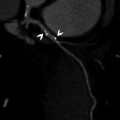Many people wonder if they have cavities or gum disease before pain starts. X-rays help dentists find these problems early, sometimes before you can see or feel them.
This article explains how dental X-rays spot tooth decay, bone loss, and hidden infections to protect your oral health.
Learn what else these images can reveal about your teeth and gums.
Exploring What Dental X-Rays Detect
Dental X-rays find problems that you can’t see with your eyes. They show issues like cavities, gum disease, and infections in the teeth or bones.
Identifying Cavities and Tooth Decay
X-rays help dentists spot cavities and tooth decay early, sometimes before you feel pain or see any marks on your teeth. Periapical X-rays show every part of a tooth from crown to root.
Bitewing X-rays make it easy to spot cavities between teeth or under fillings. These images let dentists catch small problems before they turn into bigger ones that require drilling or even pulling a tooth.
“According to Dr. Arash Ravanbakhsh of Calgary Dental Studio, X-rays are essential for detecting cavities and monitoring bone levels in the early stages.”
Dentists use dental imaging tools to find tooth decay hiding below the surface, where toothbrushes cannot reach. Early detection means treatment is easier and prevents further damage.
X-ray exams also reveal hidden issues like structural abnormalities that may not be visible during a regular checkup. Spotting these problems quickly helps plan proper care for better oral health outcomes.
Recognizing Early Signs of Bone Loss
Dental X-rays give dentists a clear view of your bone levels. Dentists use periapical and bitewing X-rays to check for early signs of bone loss around teeth. This is important because gum disease can cause the jawbone to shrink before you feel any pain or see changes in your mouth.
Detecting bone loss early helps stop serious problems, such as loose teeth or tooth loss.
Tiny changes in bone density often start near the roots where they cannot be seen without radiographs. Dental imaging shows if gums have pulled away from the tooth, creating pockets that allow bacteria to attack the jawbone.
X-rays also help track how well treatments work over time by showing both healthy and weakened areas in detail. Early detection of these issues helps dentists plan care so further damage does not occur.
Next, dental X-rays shine light on hidden infections and abscesses below the surface.
Revealing Hidden Infections and Abscesses
X-rays help dentists spot hidden infections and abscesses. These problems often start deep inside the tooth or jawbone. Periapical X-rays focus on a single tooth and show everything from crown to root.
This imaging reveals pockets of infection before you feel any pain or see swelling.
Dentists use radiography to detect abscesses early, allowing for quick treatment planning. Early detection can stop pain and prevent bone loss near the infected area. X-ray technology also helps find cysts that may not show up during a regular dental examination.
Catching these issues early leads to better oral health outcomes and less complicated treatments.
Advantages of Early Detection Through X-Rays
Early detection through X-rays has many benefits. These images help dentists find cavities and gum disease before they get worse. Catching problems early means treatment can happen sooner.
This often leads to better outcomes for patients.
X-rays also show bone loss in the jaw, which is important for overall oral health. Detecting issues like abscesses and structural abnormalities assists in planning effective treatments.
With clear images, dentists can provide preventive care that saves time and money in the long run. Regular dental examinations using X-rays keep your smile healthy and strong.
Investigating Issues Beneath the Gum Line
Dental X-rays help find problems like impacted teeth and cysts that you can’t see during a regular exam. These images give dentists a clearer view of your gum health.
They can spot issues early, which leads to better care for your smile. Want to learn more?
Examining Impacted Teeth, Cysts, and Tumors
X-rays help dentists see impacted teeth, cysts, and tumors. Impacted teeth can cause pain and lead to other problems. X-rays show the position of these teeth clearly. This helps in planning treatments that can prevent further issues.
Cysts and tumors may grow without clear signs at first. Dentists use X-rays to find these hidden issues early on. They can catch developing abscesses too. Detecting them early leads to better treatment options and improved oral health outcomes for patients.
Conclusion
Dental X-rays play a key role in catching problems early. They help dentists find cavities, tooth decay, and even bone loss. Early detection leads to better treatment options. This means healthier smiles for patients.
Regular X-rays are an important part of good dental care.
Stay updated, free articles. Join our Telegram channel

Full access? Get Clinical Tree







